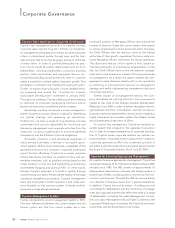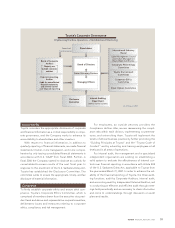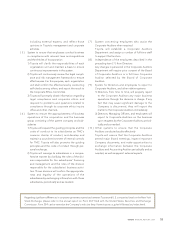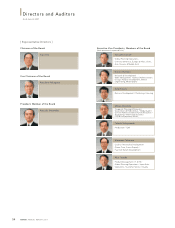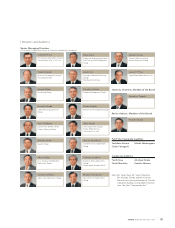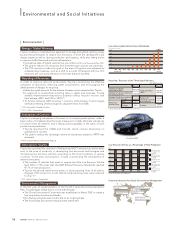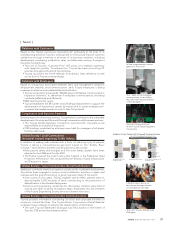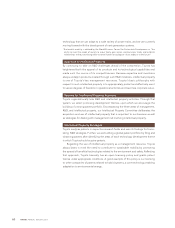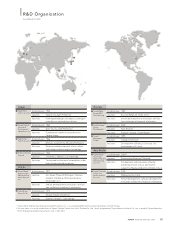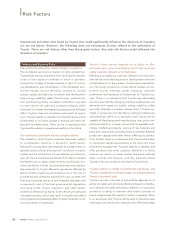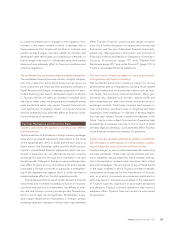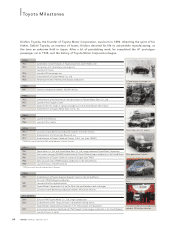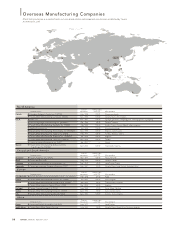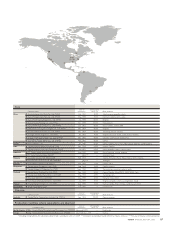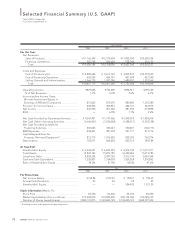Toyota 2007 Annual Report Download - page 62
Download and view the complete annual report
Please find page 62 of the 2007 Toyota annual report below. You can navigate through the pages in the report by either clicking on the pages listed below, or by using the keyword search tool below to find specific information within the annual report.
60 ANNUAL REPORT 2007
technology that we can adapt to a wide variety of power trains, and we are currently
moving forward with the development of next-generation systems.
* Sustainable mobility is defined by the World Business Council for Sustainable Development as “the
ability to meet the needs of society to move freely, gain access, communicate, trade, and establish
relationships without sacrificing other essential human or ecological values today or in the future.”
Approach to Intellectual Property
By continuing to take on R&D challenges ahead of the competition, Toyota has
heightened both the appeal of its products and its technological capabilities and
made such the source of its competitiveness. Because expertise and inventions
always underpin products created through such R&D initiatives, intellectual property
is one of Toyota’s key management resources. Toyota’s basic philosophy with
respect to such intellectual property is to appropriately protect and effectively use it
to secure degrees of freedom in operational activities and maximize corporate value.
Systems for Intellectual Property Activities
Toyota organizationally links R&D and intellectual property activities. Through that
system, we select promising development themes, upon which we encourage the
building of a strong patent portfolio. Encompassing the three areas of management,
R&D, and intellectual property, our Intellectual Property Committee deliberates the
acquisition and use of intellectual property that is important to our business as well
as strategies for dealing with management risk involving intellectual property.
Intellectual Property Strategies
Toyota analyzes patents in respective research fields and uses its findings for formu-
lating R&D strategies. Further, we are building a global patent portfolio by filing and
obtaining patents after identifying the areas of each technology development theme
in which Toyota should acquire patents.
Regarding the use of intellectual property as a management resource, Toyota
always bears in mind the need to contribute to sustainable mobility by promoting
the spread of beneficial technologies related to the environment and safety. Reflecting
that approach, Toyota basically has an open licensing policy and grants patent
license under appropriate conditions. A good example of this policy is our licensing
to other companies of patents related to hybrid systems, a core technology enabling
adaptation to environmental energy.


